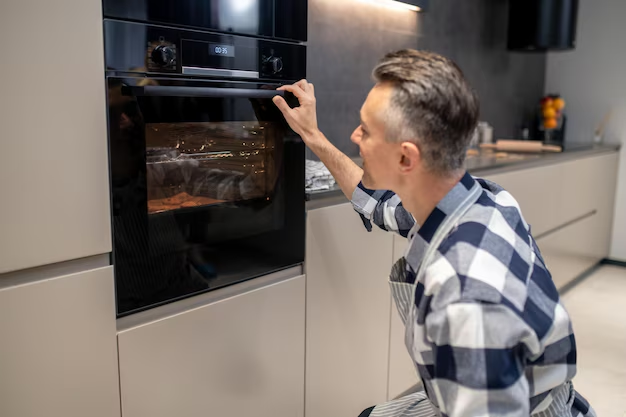DIY Guide: Fixing Your Refrigerator Light with Ease
Nothing is more frustrating than opening your refrigerator and encountering darkness where light should be. A malfunctioning refrigerator light is a common issue that can seem daunting, but with a little know-how, you can easily tackle this problem yourself. In this comprehensive guide, we will walk you through the steps to diagnose and repair your refrigerator light, saving you both time and money.
Why Is My Refrigerator Light Not Working?
Before we delve into the repair process, it's crucial to understand the possible reasons why your refrigerator light might not be working. Here are some common culprits:
- Burned-out Bulb: The most straightforward reason your refrigerator light might not work is that the bulb has burned out.
- Faulty Light Switch: If the light switch, which turns the light on and off when you open and close the door, is defective, it might fail to activate the bulb.
- Power Supply Issues: Problems with the power supply to the refrigerator can also result in a non-functioning light.
- Wiring Problems: Loose or damaged wiring in the refrigerator can disrupt the light circuit.
- Broken Door Mechanism: If the door mechanism that activates the light isn't working properly, the light won't turn on.
Understanding these causes is the first step in diagnosing and fixing the problem yourself.
Safety First: Preparing for the Repair
Before diving into any repair work, it's essential to prioritize safety. Follow these preparatory steps to ensure a safe repair process:
- Unplug the Refrigerator: Always disconnect the appliance from the power source to avoid electrical shocks.
- Clear Out the Fridge: Remove any items that could obstruct your work area inside the fridge.
- Gather Necessary Tools: Common tools you'll need include a screwdriver, multimeter, and replacement bulb.
Diagnosing the Problem
To effectively address the issue, you'll need to diagnose what's wrong with your refrigerator light. Here's a step-by-step approach:
Step 1: Check the Bulb
- Remove the Bulb: Carefully remove the light cover and take out the bulb.
- Inspect the Bulb: Look for any visible signs of damage or burnout.
- Test the Bulb: If possible, test the bulb in another fixture to see if it works. Alternatively, use a multimeter to check for continuity.
Step 2: Examine the Light Switch
- Locate the Switch: The light switch is usually positioned on the refrigerator's door frame.
- Test the Switch: Use a multimeter to check for continuity when the switch is pressed. If there's no continuity, the switch may need replacing.
Step 3: Investigate the Power Supply
- Check the Plug and Outlet: Ensure that the fridge is properly plugged in and that the outlet is functional.
- Inspect for Tripped Circuit Breakers: Look at your home's circuit breaker panel to see if the fridge's circuit is tripped.
Step 4: Check the Wiring
- Inspect Visible Wiring: Look for any loose or frayed wires that could be causing connectivity issues.
Step 5: Evaluate the Door Mechanism
- Observe the Door Functionality: Check if the door closes properly and engages the light switch.
How to Replace a Refrigerator Light Bulb
Once you've diagnosed that the bulb is the issue, follow these steps to replace it:
- Purchase a Compatible Bulb: Refrigerators typically use appliance bulbs. Confirm the correct size and wattage for your model.
- Install the New Bulb: Screw the new bulb into the socket.
- Replace the Light Cover: Ensure the cover is securely in place.
- Plug the Fridge Back In: Reconnect the power and test if the light works.
Repairing the Light Switch
If the light switch is the issue, you may need to replace it:
- Unplug the Fridge: Ensure the appliance is disconnected from any power source.
- Remove the Old Switch: Use a screwdriver to detach the old switch.
- Install the New Switch: Connect the new switch, securing it with screws.
- Test: Restore power to check if the repair was successful.
Addressing Power Supply Issues
- Verify Outlet Power: Confirm the outlet is live by testing it with another appliance.
- Reset Circuit Breakers: If tripped, flip the breaker switch to reset.
- Professional Help: If unsure about electrical issues, consult a professional to avoid hazards.
Resolving Wiring Problems
If wiring is at fault:
- Locate Loose Wiring: Gently tug on wires to find any loose connections.
- Re-secure Connections: Tighten or reattach wires as needed.
- Professional Assistance: Complex wiring issues may require professional repair.
Ensuring Door Mechanism Works
Sometimes, the door mechanism is at fault:
- Check Door Alignment: Ensure the door closes fully.
- Adjust Hinges: Tighten or adjust door hinges so they activate the light switch.
Summary: Your Refrigerator Light Repair Checklist
Here's a handy summary to guide your repair process:
- 🔍 Diagnose the Issue: Identify whether the bulb, switch, power supply, wiring, or door mechanism is at fault.
- 💡 Replace the Bulb: If burned out, use an appliance-compatible bulb.
- ⚡ Check Power Supply: Confirm plug and outlet functionality; reset breakers if needed.
- 🔧 Repair or Replace Switch: Test and replace faulty switches.
- 🛠️ Fix Wiring and Door Issues: Secure connections and adjust mechanisms as needed.
Staying Proactive: Tips for Future Prevention
Maintaining your refrigerator light can prevent future breakdowns:
- Regular Inspections: Periodically check the bulb and wiring for signs of wear.
- Clean the Refrigerator: Keep the light cover and switch area clean to prevent buildup.
- Use Correct Bulbs: Always use the specified bulb type for your refrigerator model.
Darkness in your fridge is not only inconvenient but can also make it hard to locate items. By taking the time to understand and address common issues, you can quickly bring the light back to your refrigerator without professional assistance. Now that you are equipped with this knowledge, you'll feel confident tackling this common household problem the next time it occurs.
